
With the new Noorda Center for the Performing Arts, UVU is ready to take the stage
By Layton Shumway | Photography by Jay Drowns, August Miller, Brooke Steinicke, Eric Flores, Kim Raff
IT’S TRADITION, when celebrating the opening of a new building, to cut a ceremonial
ribbon, usually with an oversized pair of scissors. But on March 25, 2019, Utah Valley
University President Astrid S. Tuminez, joined by university and community leaders,
chose a different cutting implement: a pair of cavalier-style dueling sabers.
The choice wasn’t a random one. The swords were delivered moments earlier by a pair of
actors — UVU School of the Arts alumnus Benjamin Henderson and sophomore Jacob Thomason
— who, dressed in full Shakespearean garb, had staged a mock sword fight across the
walkways and down the steps of UVU’s new Noorda Center for the Performing Arts.
What better way, after all, to celebrate the new home of the performing arts at UVU
than with a performance?
“It was so much fun to be a part of this honor by using the thing we’ve trained in,”
Henderson says.
For too long, students in UVU’s School of the Arts have trained in spaces and performed in
facilities that were ill-equipped and never intended for such use, especially at
the institution’s current scale. But now, thanks to the efforts of countless people
— from UVU leaders and employees to generous donors to state legislators, and even
a world-famous face or two — the performing arts at UVU, and in Utah County, have
a new home. And the curtain just went up.
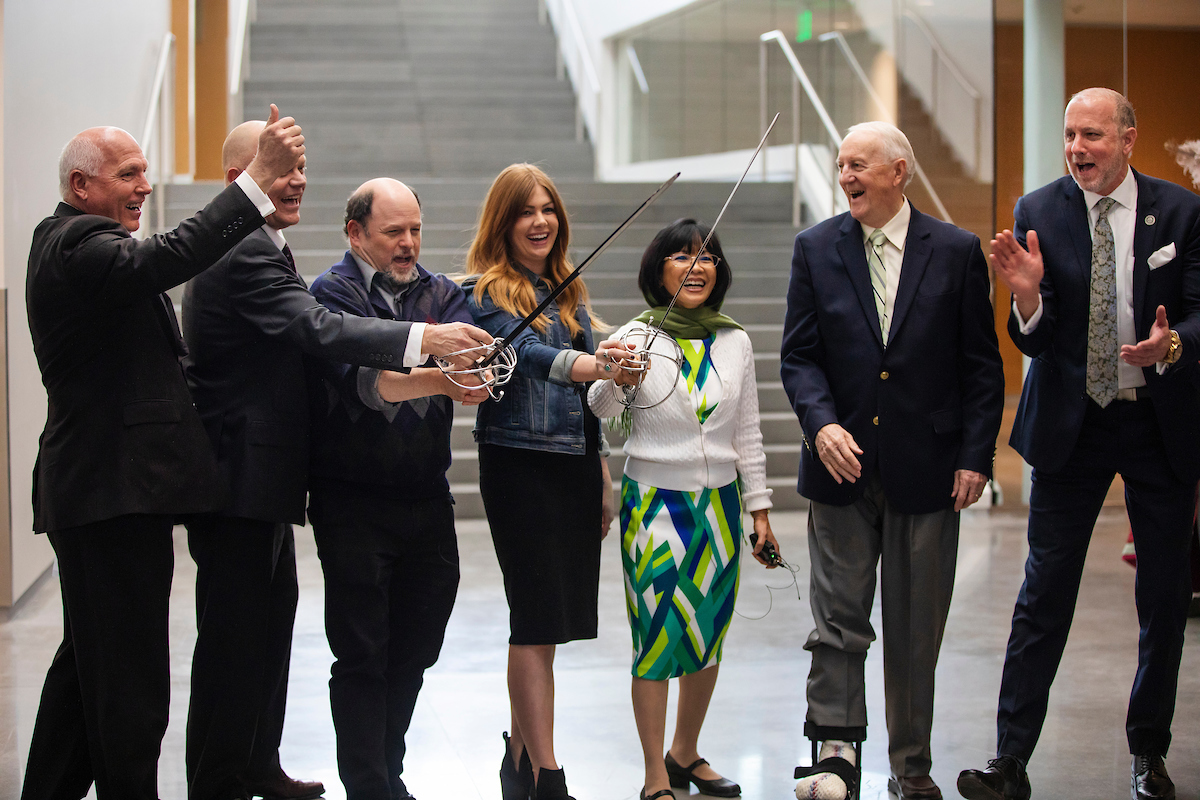
EVERYTHING WITH NOTHING
UVU was founded as a vocational school over 75 years ago, but that hasn’t stopped
the university’s performing arts students from excelling, especially in recent years.
In 2013 and 2014, UVU theatre faculty and students received top honors at the Kennedy
Center American College Theater Festival — the first university in the nation to win
that prize in back-to-back years. In 2015, UVU’s Ballroom Dance Tour Team won a
world championship at the British Ballroom Formation Dance Competition in Blackpool,
England. And graduates throughout the School of the Arts have gone on to successful
careers as performers, composers, and professional creators.
Until now, though, they’ve had to do all that in practice facilities and performance
spaces that simply didn’t match the quality of the talent on hand, according to Stephen
Pullen, dean of UVU’s School of the Arts. Music and theatre students
had to double up in the Gunther Technology Building, just down the hall from automotive
classrooms and metalworking shops. Concerts and dramatic productions were limited
to spaces designed for lectures, not performances.
Dancers had to crowd into physical education classrooms and gyms. “Prior to this building
there was a thriving, robust, vibrant school of the arts here at Utah Valley University,”
Pullen says. “Amazing faculty, who have been trained at some of the top conservatories
and universities in the country, teaching and mentoring and training some of the most
talented students you will find anywhere in the United States. But they were doing
it without any kind of facility. They were doing it in places I called ‘dungeons’
because they were that dismal. And yet the kind of work that was being accomplished
by these remarkable faculty members and these astounding students was mindblowing.”
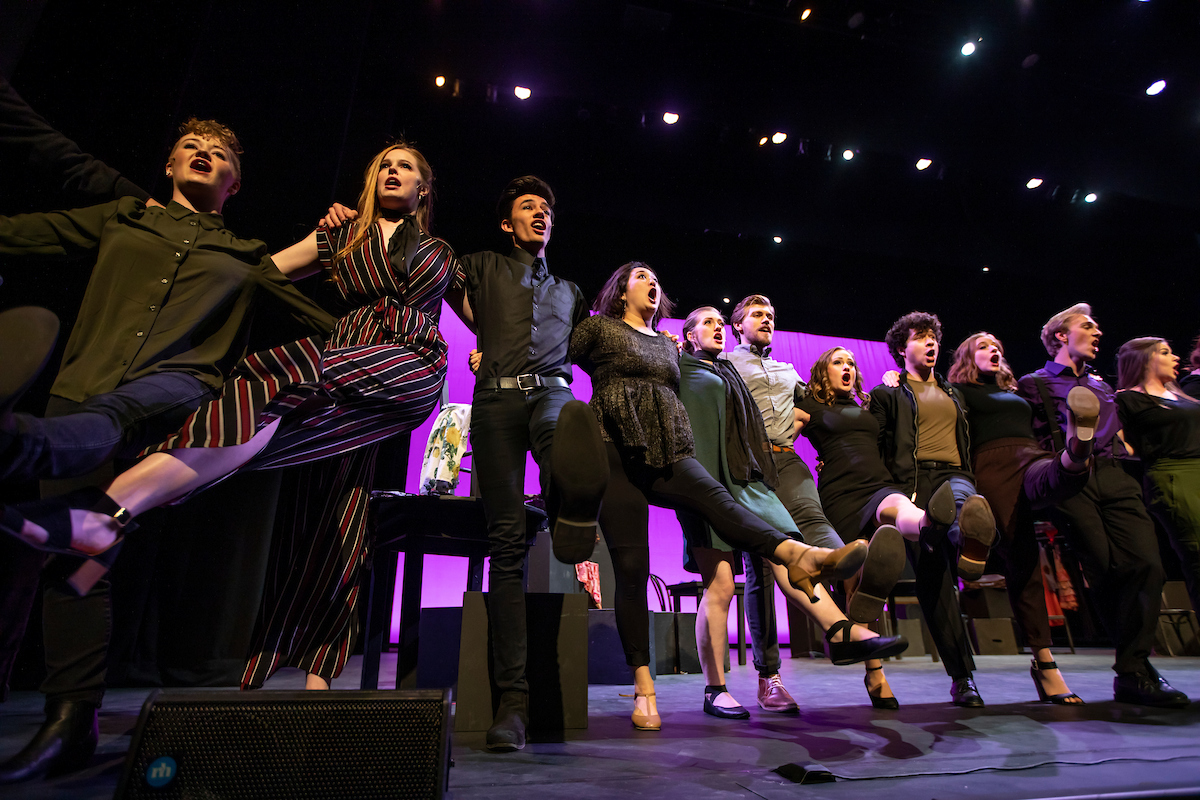
As programs within the School of the Arts continued to excel — and as UVU grew large
enough to become a full-fledged university and gain more public attention — it became
clear to K. Newell Dayley, School of the Arts dean before Pullen, that something had
to change.
“The story of this building begins with the faculty, staff, and students who did everything
with nothing,” Dayley says. “They got the programs to a certain point where we had
to have a building. That’s where the story begins.”
Together with then-UVU President Matthew S. Holland, Dayley came out of retirement
to spearhead efforts to give UVU the performing arts facilities its students — and
community — deserved. They and other UVU leaders sparked a fundraising campaign which
raised more than $22 million in private donations in two years, led by an anchor gift
from the Ray & Tye Noorda Foundation. That’s the largest amount of private funding
raised for a new building in UVU history to date.
Upon seeing the response from UVU donors and community partners, in 2016 the Utah
State Legislature granted UVU another $30 million in funding. Finally, the Noorda
Center for the Performing Arts could become a reality.
“My hat is really off to this faculty, a group of 75-80 people who have done amazing,
incredible things with sub-standard facilities,” Pullen says. “They’ve gotten creative,
they’ve made sacrifices, they’ve turned venues that are not meant to be performing
venues into performing venues. But now that we have these facilities, which are state
of the art, we can really take off in ways that we haven’t been able to before.”
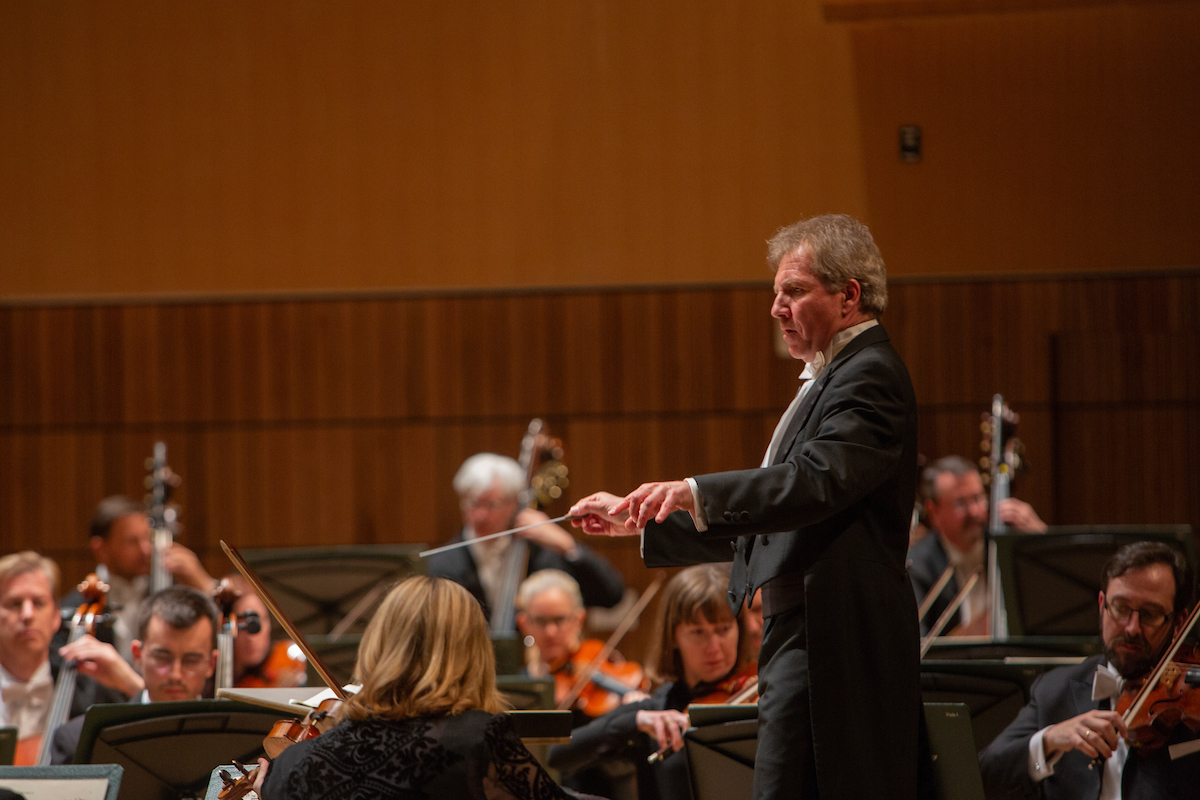
CREATING FOR THE COMMUNITY
The Noorda, as it has come to be known, is effectively five separate buildings under
one roof. Each section of the 130,000square-foot building was built with its own
foundation, walls, and insulation to prevent noise transfer from one venue to the
next. There are seven venues in all, designed with not just performance in mind but
recording as well. Each one functions as a professional soundstage with audio and
video that feeds back to a central recording studio, which can be used by commercial
music students.
The 889-seat Concert Hall is the largest performance venue, and it will serve more
than UVU students and faculty alone. It’s also the new home of the Utah Symphony in
Utah County. The renowned ensemble christened the new venue during March’s “Week of
Dreams,” a series of performances in The Noorda planned in tandem with the inauguration
of President Tuminez. The symphony will play at The Noorda six more times over the
next 12 months, with concerts featuring the works of John Williams, Rachmaninoff,
Gershwin, and Dvorak, among others.
“The new partnership with UVU at the Noorda Center for the Performing Arts represents
a very significant initiative for us,” says Paul Meecham, president and CEO of Utah
Symphony and Utah Opera. “Situated in the heart of Utah’s fastestgrowing county,
this beautiful new concert hall will become our long-term home in Utah Valley, meeting
our goal to serve more Utahns, and encouraging businesses and individuals to support
our work in schools and the community.”
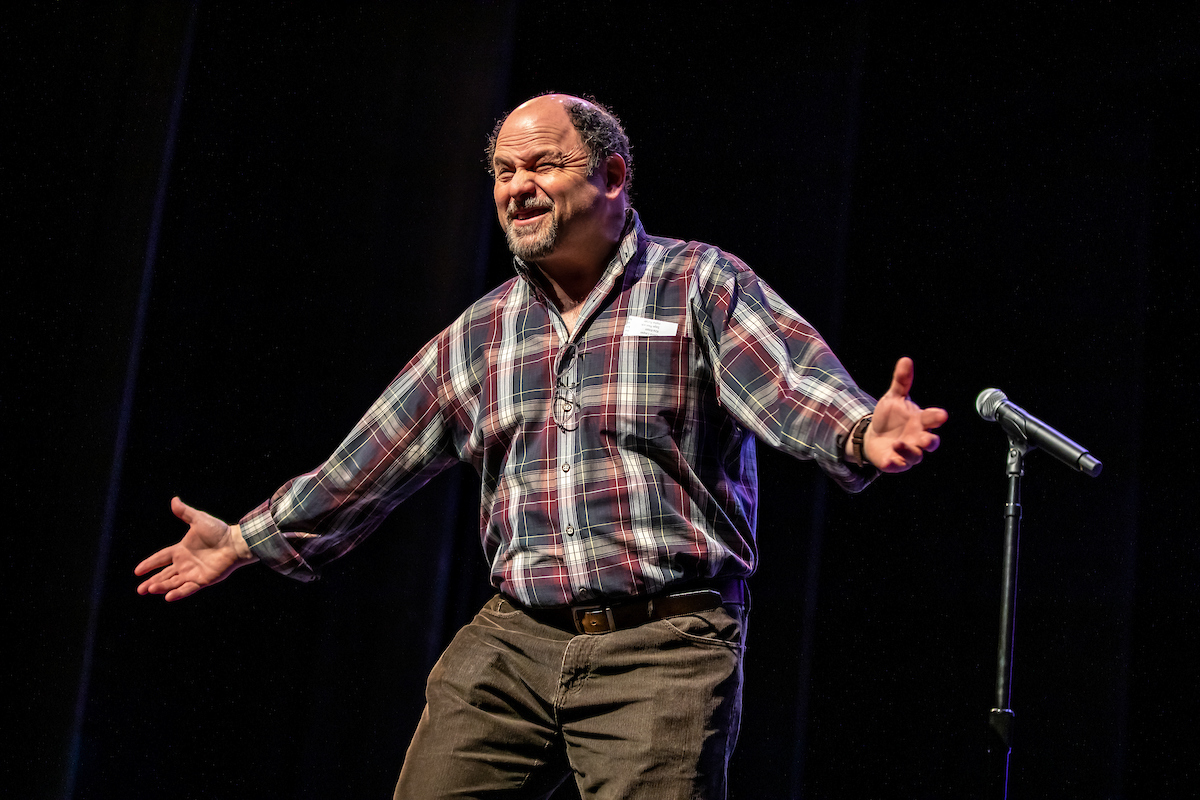
Another high-profile performer took the stage at The Noorda during the Week of Dreams:
actor Jason Alexander, who has forged a surprising friendship with UVU over the past
decade. First invited to campus through UVU School of the Arts Events and Production
Manager Traci Hainsworth, Alexander has made a personal effort both in holding workshops
and master classes for UVU and local high school students, as well as serving as a
fundraising ally.
“I don’t believe in art for art’s sake,” Alexander told UVU Magazine in 2014. “You
are creating for your community. You’re an artist that has set up shop here. And
if you want to be in dialogue with your audience, you must understand who your audience
is and serve them. So an arts building here serves not just this campus but an ever-growing
concentric circle of community. UVU has a really good eye on that.”
While community members will certainly benefit from The Noorda, UVU faculty, staff,
and students are even more excited.
“It encourages me that there’s a lot of support from the community for this kind of
thing,” says Thomason, one of The Noorda’s ribbon-cutting knights. “Going from a
small black box [theatre] to a huge proscenium means we get to practice different
techniques and train in different environments. It gives us fantastic opportunities
all around.”
“Some of our students had better facilities at their high schools than we had here,”
says Linda Moore, School of the Arts assistant dean. “Now our students can graduate
having had experiences performing in an actual concert hall instead of a lecture hall
stage. Our music, our theatre, our dance, our opera students get to perform on a proscenium
stage, with a fly loft and an orchestra pit. Those two things alone are huge. They’re
going to learn how to do things we couldn’t teach them before.”
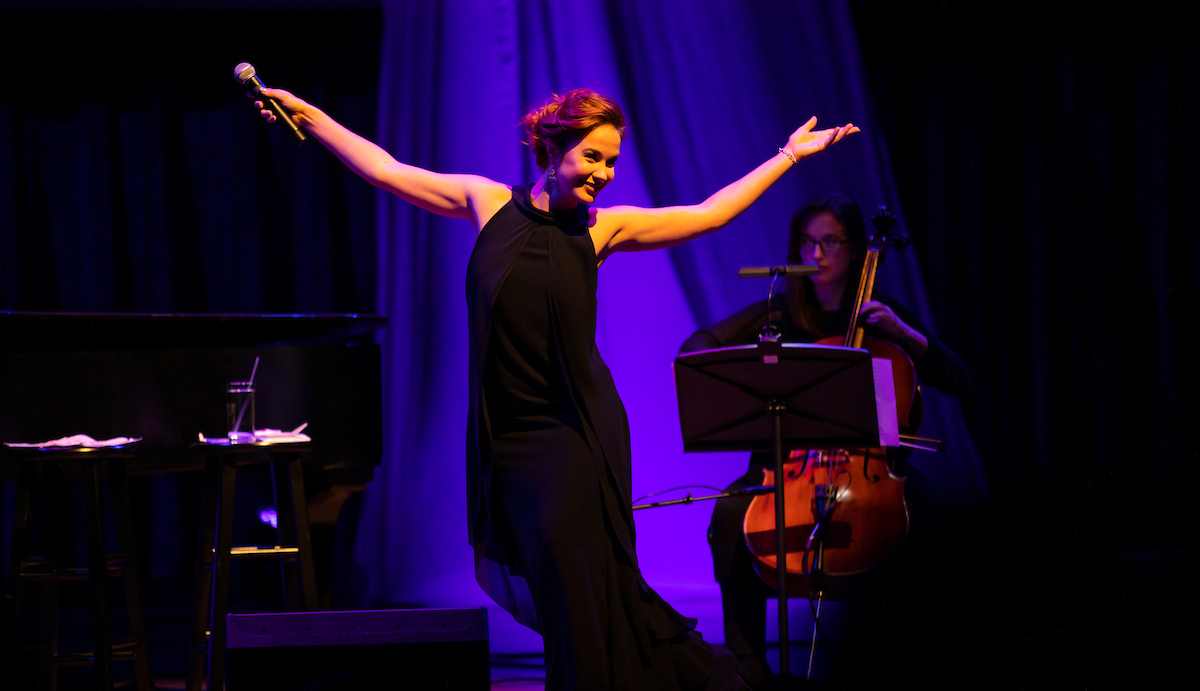
The Noorda raises UVU’s profile as a whole too, according to School of the Arts Marketing
Manager Kaitlin Taft. She says having a facility equipped to handle outside performers
like the Utah Symphony and Alexander will help change how the community perceives
the arts in Utah County.
“Our students and faculty were already talented,” Taft says. “But I think being able
to say we have bigger names coming in makes it feel like we’re really a city now.
We’re really an arts-focused community.”
That’s significant for Pullen, who serves as The Noorda’s artistic director in addition to his duties as dean. It’s his responsibility
to put together a performance season that weaves student and professional productions
together in a way that benefits the whole community.
“We wanted our students to have direct exposure to these professional performers,”
Pullen says. “We wanted them to work with them, to rehearse with them, to have master
classes and educational opportunities. And we also know there’s an expectation to
see nationally and internationally known professional artists in this venue. I’m
glad that we’re going in this direction because I think we’re going to knock people’s
socks off.”
“The arts make us better people, the arts elevate us, the arts break our hearts and
make us better,” President Tuminez said during the center’s opening. “What we do
here will outlive us.”